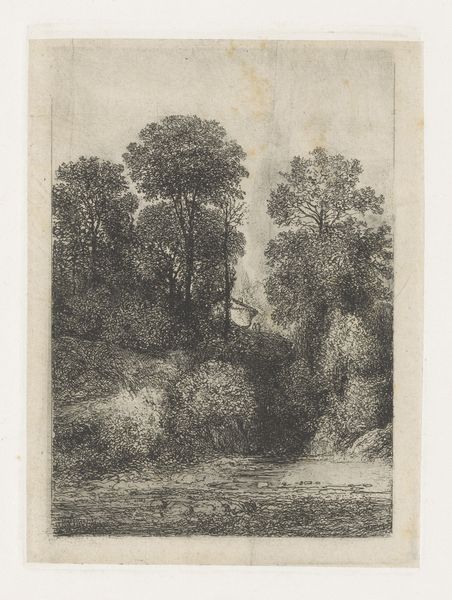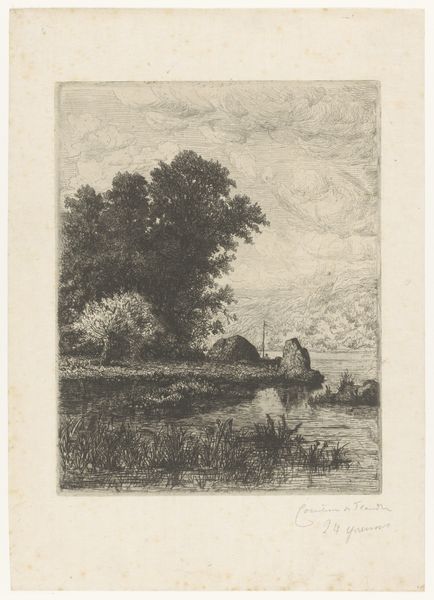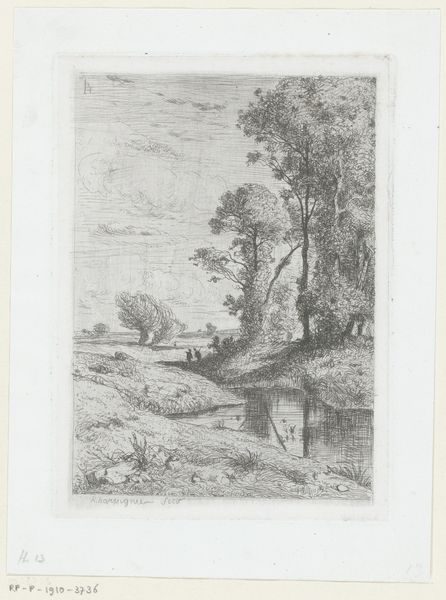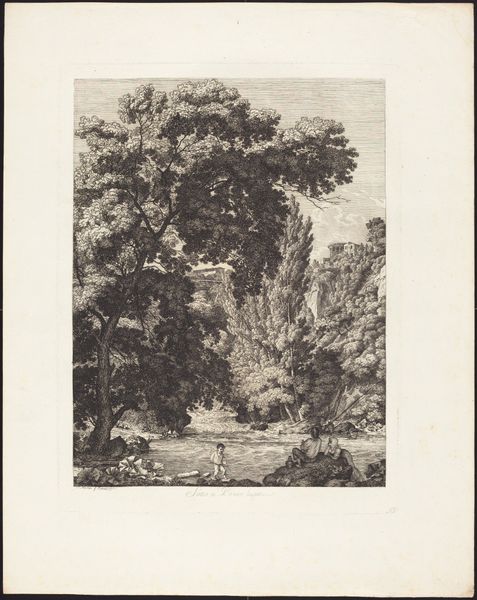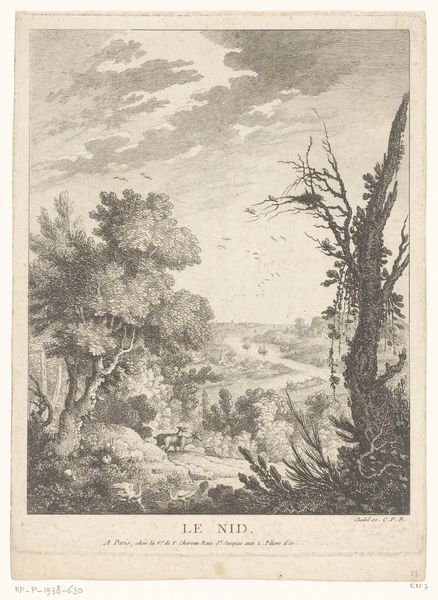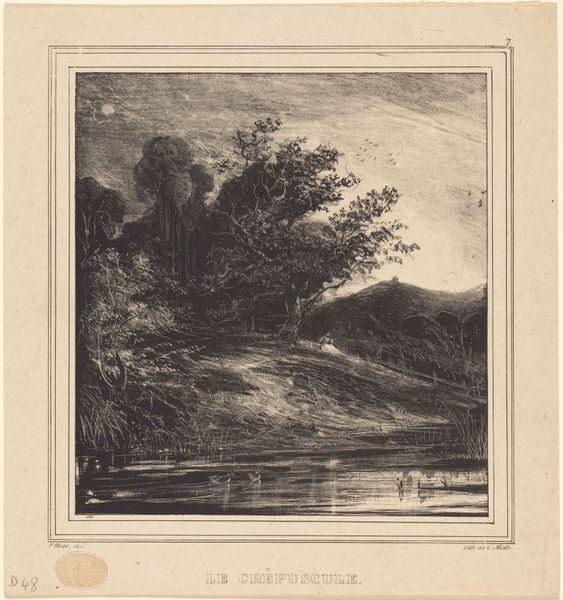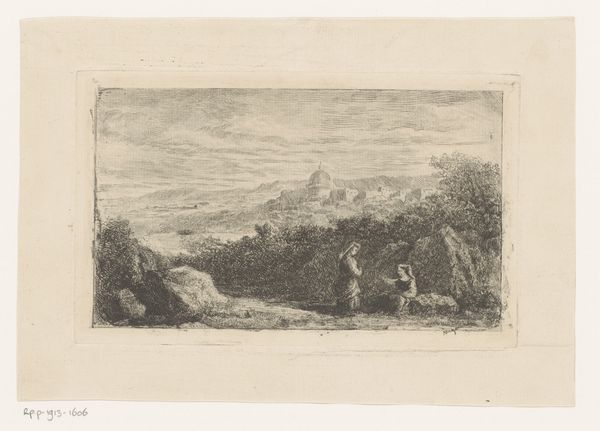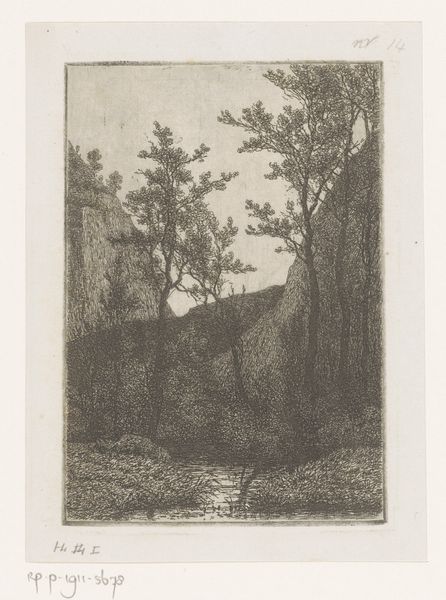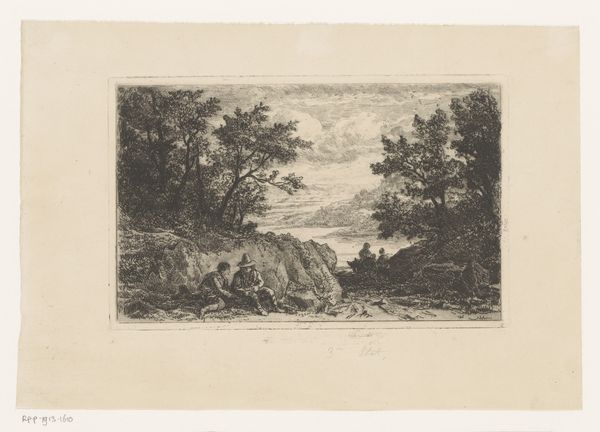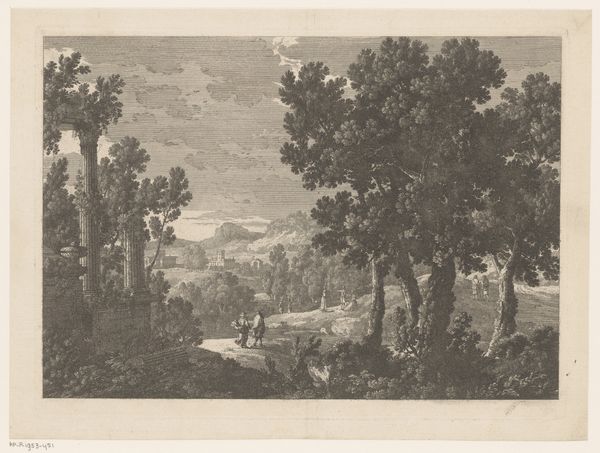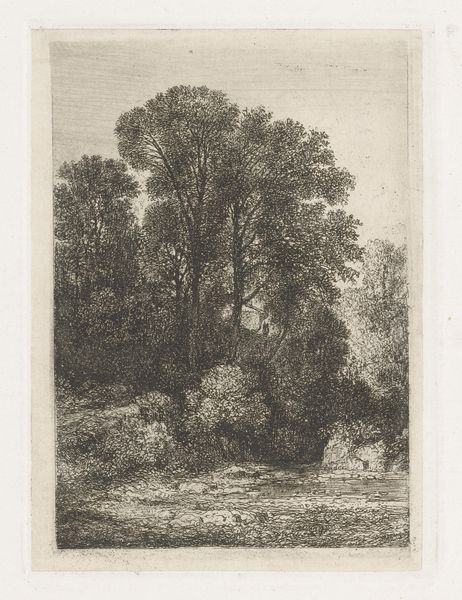
Dimensions: height 240 mm, width 208 mm
Copyright: Rijks Museum: Open Domain
Curator: Karel Theodoor Hippert's 1874 print, titled "Berglandschap met waterval," which translates to "Mountainous landscape with waterfall," employs etching and ink on paper. It’s currently held in the Rijksmuseum collection. Editor: It strikes me as quite melancholic, almost like a stage set for a tragic romance. The delicate lines create a feeling of remoteness, perhaps hinting at the power and isolation of nature, don’t you think? Curator: Definitely. Given its time, and knowing the undercurrents of Romanticism, this isn’t merely about picturing a place; it’s about evoking emotions, tapping into a deep sense of the sublime, and connecting with sociopolitical themes that mirror societal shifts. Editor: Speaking of those undercurrents, it appears the making is crucial. I am interested in understanding what kind of social structures surrounded Hippert, allowing him the leisure time and access to materials for creating art? What kind of market was there for a landscape etching? Was it something middle class people purchased to remember experiences on travels? Curator: Precisely. It touches on themes of privilege and the relationship between artistic production and wealth disparity. If we bring feminist theory in, there's space to ponder about those missing histories and the invisible labors which enabled artworks like this to surface. Editor: True, we might reflect critically if we look through that lens, like questioning the social framework to fully engage with the meaning embedded into the work itself. Now, let’s pivot a bit: regarding materiality, are there any archival notes detailing the kind of inks, tools and papers available to Hippert at that time? The effects that he was capable of creating, the kind of mood. Curator: The ink and the fineness of etching are crucial. They signal Romanticism's focus on emotion. The fragility also serves a crucial aspect, as in a metaphor for the ephemeral quality of nature and beauty as concepts of higher status during the period when women's intellectual labor were ignored. Editor: All of those small details become interesting clues. Considering labor practices involved, one wonders how much did the printmakers labor was valued or unrecognized. What systems kept such labor going while their artworks achieved canonical stature? It is food for thought! Curator: Agreed, let's be mindful of how broader systemic inequalities become entangled within a seemingly placid mountainscape with a tiny waterfall. Editor: This reminds us that understanding the creation, materials, labor conditions as fundamental to grasping how value is socially produced and reproduced by cultural outputs. Thank you for taking a critical eye in order to better value such history!
Comments
No comments
Be the first to comment and join the conversation on the ultimate creative platform.
